Cancer Senescence
How senescent cancer cells are associated with cancer progression and relapse?
Cellular senescence is defined as an irreversible cell cycle arrest caused by various stresses. Interestingly, although cancer cells have the highest proliferative capacity within our body, they can also be driven into a senescent state by massive insults within the tumor microenvironment.
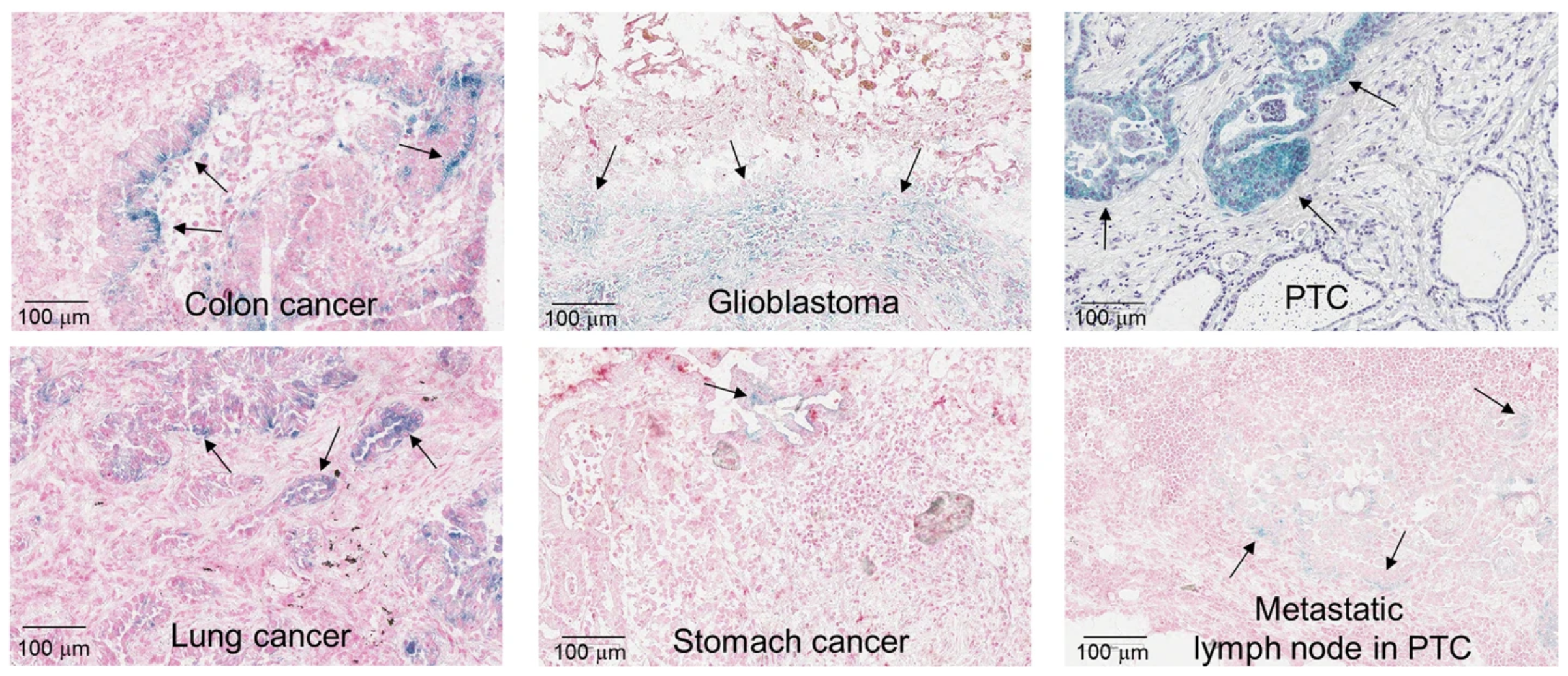
Source: (Park et al., 2021)
Non-proliferating cancer cells? You might find them a bit odd, and scientists initially thought the same. Consequently, they considered the possibility that these cancer cells might be a consequence of our body’s defense mechanism against cancer progression; indeed, this is the case in the initial stages of carcinogenesis when oncogenes are highly overexpressed.
However, in 2017, our laboratory was the first to reveal that these senescent cancer cells actually possess cancer-promoting potency. In cases of papillary thyroid cancer, we found that senescent cancer cells are located at the invasive front of the cancer tissue and actually act as the spearhead of cancer invasion.
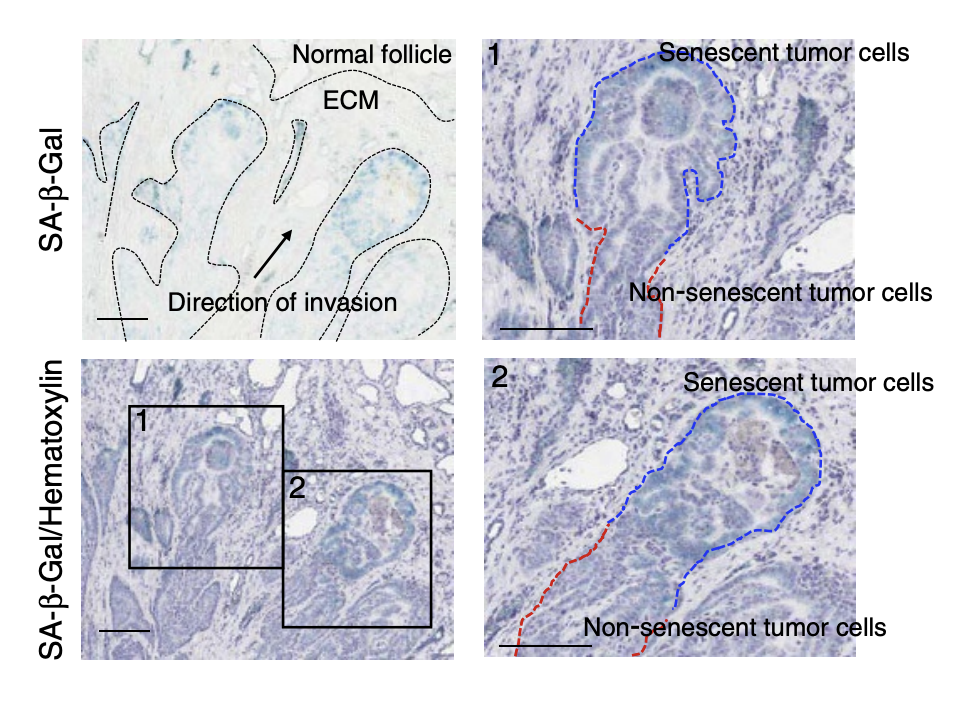
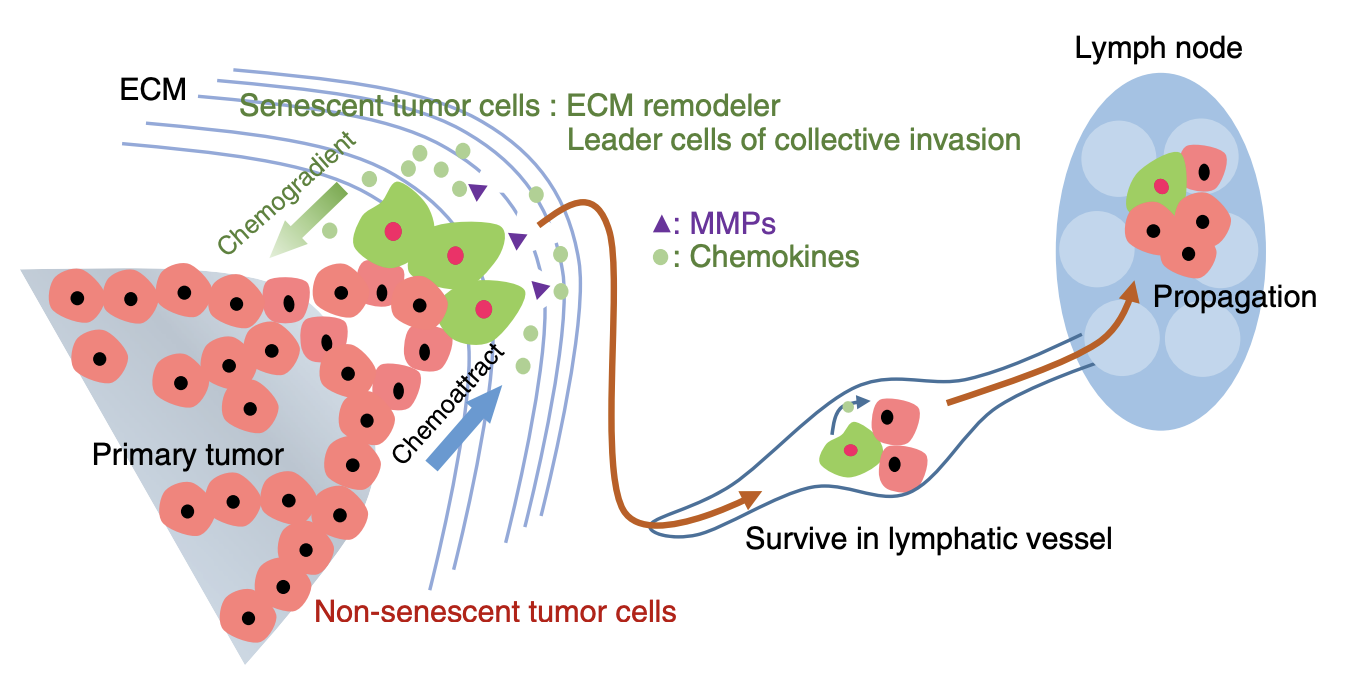
Source: Kim Y.H. et al. Nat. Commun. (2017)
Moreover, senescent cancer cells are closely associated with the immune microenvironment of cancer. Cytotoxic T cells are one of the few cell types that have the potency to kill cancer cells. Indeed, senescent cancer cells express specific proteins that inhibit the infiltration of cytotoxic T cells into the cancer tissues. In other words, the presence of senescent cancer cells hinders and weakens the cancer-killing potency of our normal immune system.
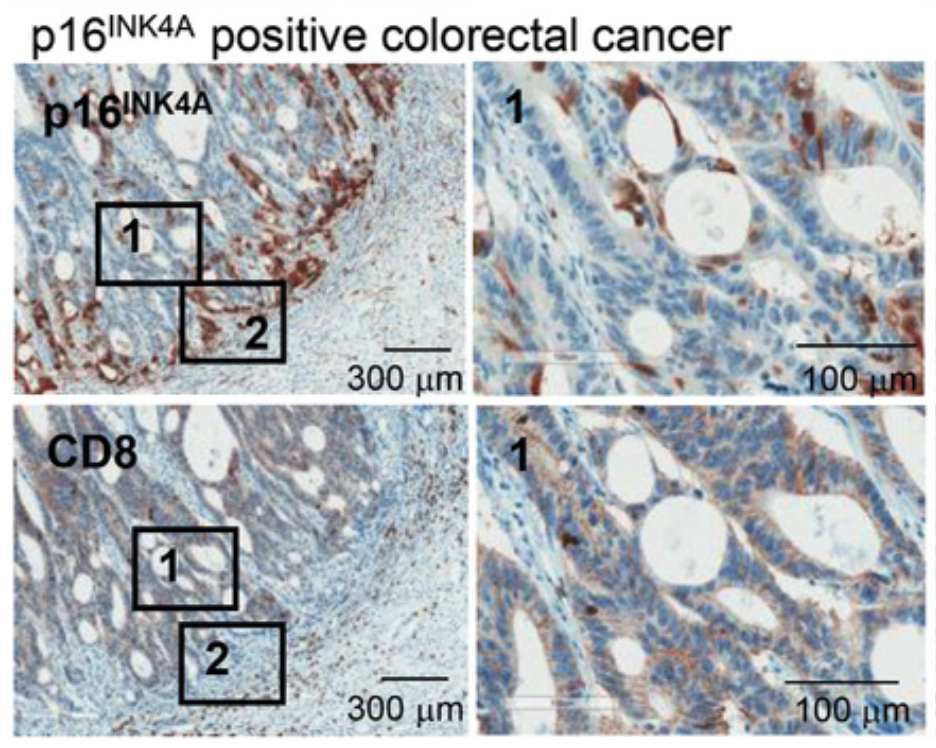

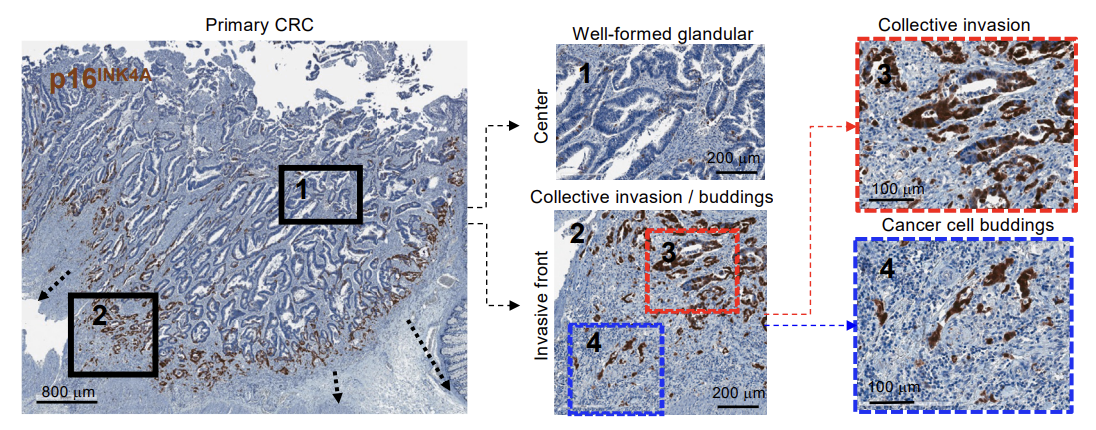
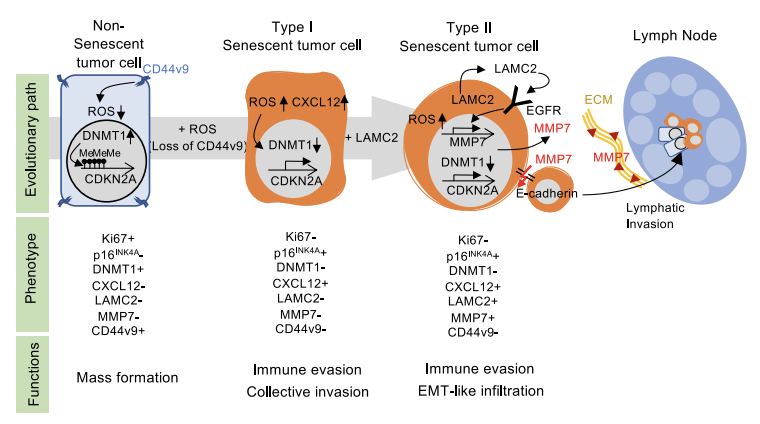
Source: (Park et al., 2024)


